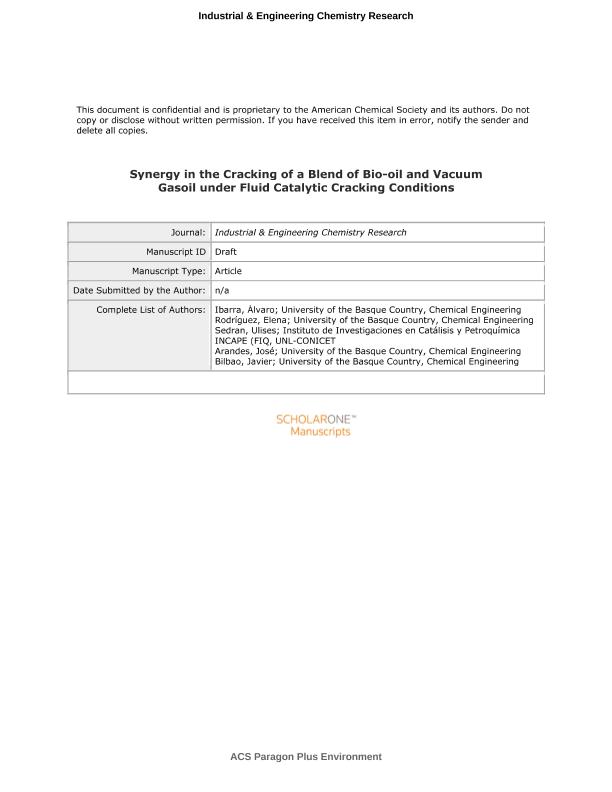Artículo
Synergy in the Cracking of a Blend of Bio-oil and Vacuum Gasoil under Fluid Catalytic Cracking Conditions
Fecha de publicación:
02/2016
Editorial:
American Chemical Society
Revista:
Industrial & Engineering Chemical Research
ISSN:
0888-5885
Idioma:
Inglés
Tipo de recurso:
Artículo publicado
Clasificación temática:
Resumen
The catalytic cracking of a blend of raw bio-oil (20 wt %) from black poplar sawdust fast pyrolysis and vacuum gasoil (VGO, 80 wt %) has been studied. The runs have been performed in a riser simulator reactor (RSR) under fluid catalytic cracking (FCC) conditions; that is, 500-560 °C, catalyst to feed mass ratio of 6 g cat ( g feed) -1 on a dry basis, reaction times of 3-10 s and a equilibrated commercial FCC catalyst. The cofeeding effect has been quantified by comparing the yields of product lumps and individual components in the gaseous fraction and gasoline lump in the cracking of VGO, raw bio-oil, and their blend (20% bio-oil/80% VGO), at the same conversion values (60-70 wt %). The cofeeding has a favorable synergy because it promotes the formation of C 3 -C 4 and gasoline (C 5 -C 12 ) hydrocarbon lumps, attenuating the formation of CO 2 , CO, and also coke formation. In the cracking of the blend (80% VGO/20% bio-oil) at 70 wt % conversion, a deoxygenation degree of 95 wt % has been obtained, with a total liquid fuel yield of 52.8 wt % and a gasoline yield of 31.6 wt %, with a low oxygenate fraction (<4 wt %) containing carboxylic acids, aldehydes, ketones, and phenols.
Palabras clave:
Fluid Catalytic Cracking
,
Bio-Oil
,
Vacuum Gas Oil
,
Fcc Catalyst
Archivos asociados
Licencia
Identificadores
Colecciones
Articulos(INCAPE)
Articulos de INST.DE INVEST.EN CATALISIS Y PETROQUIMICA "ING. JOSE MIGUEL PARERA"
Articulos de INST.DE INVEST.EN CATALISIS Y PETROQUIMICA "ING. JOSE MIGUEL PARERA"
Citación
Ibarra, Álvaro; Rodríguez, Elena; Sedran, Ulises Anselmo; Arandes, José M.; Bilbao, Javier Ignacio; Synergy in the Cracking of a Blend of Bio-oil and Vacuum Gasoil under Fluid Catalytic Cracking Conditions; American Chemical Society; Industrial & Engineering Chemical Research; 55; 7; 2-2016; 1872-1880
Compartir
Altmétricas




